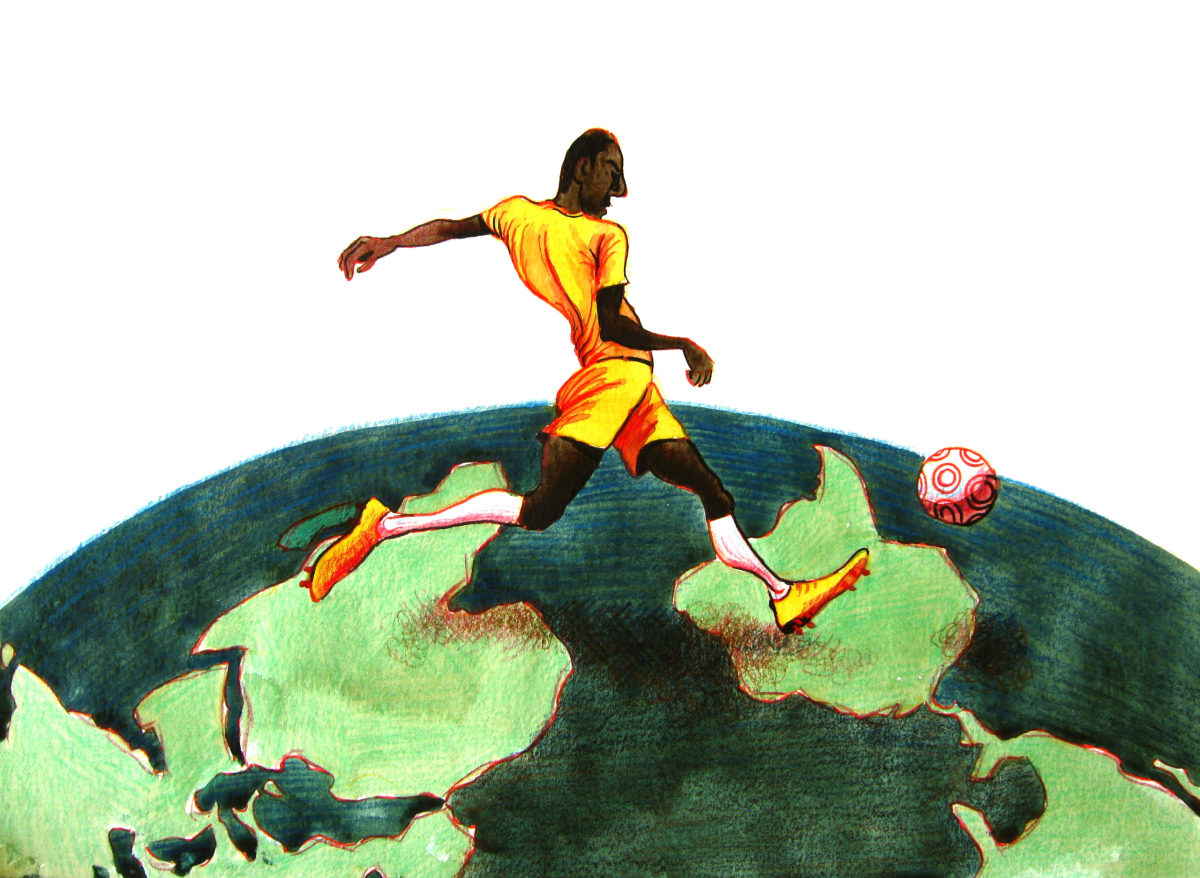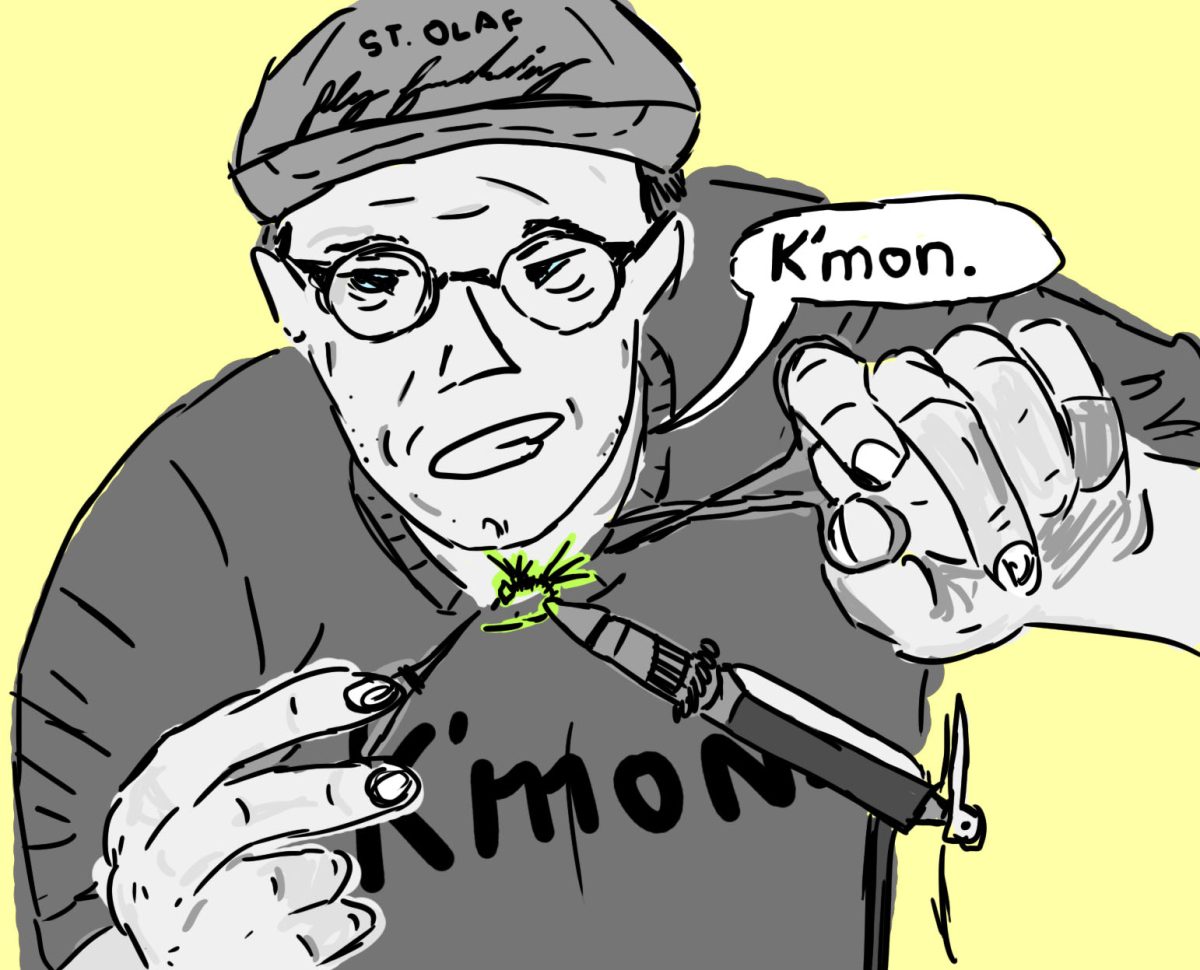In the game of soccer, no single player can dribble the length of the pitch without obstruction, or save every uncontested shot. The game is won through teamwork: the defense holding their line, the offense anticipating runs, the midfielders fluidly moving between sides of the ball.
In a game so dependent on teamwork, however, individual moments are rarely avoided. Take St. Olaf’s Sept. 7 contest against Bethany Lutheran College as evidence. In the 27th minute, Hamza Osman ’21 leaped from his position in the goal to deflect an incoming shot off the crossbar, keeping the game tied at nil-nil.
As fans cheered the impressive save, the Oles did not hesitate to form an attack of their own, scoring moments later on a Tomas Gusmeo ’23 free kick, his first collegiate goal. The game ended in a 1-0 victory for the Oles and their 90 minutes of hard work ultimately boiled down to a seven minute sequence that rested on the instincts of two players.
Just five weeks prior to suiting up for their match against Bethany Lutheran, Gusmao and
Osman could not have found themselves further apart. Separated by 6,000 miles, speaking different languages in different parts of the world, the two Ole soccer stars had yet to meet. Osman is from Cairo, Egypt and Gusmao is from Rio de Janeiro, Brazil.
While their arrival to Northfield may be bemusing to many, the St. Olaf men’s soccer program is no stranger to passports. If you comb through the soccer rosters of the eleven schools in the Minnesota Intercollegiate Athletic Conference, you will find nineteen international students listed. Ten of them wear the St. Olaf uniform.
In a conference that prides itself on Midwest tradition, having ten international students sets the St. Olaf program apart. The Oles’ roster includes players from eight countries, including Egypt, Brazil, Guatemala, France, Mexico, Nigeria, Sierra Leone and South Korea. If you open the door to the soccer pod in Ytterboe, you will see that they do not use decorative flags sparingly.
In a conference that prides itself on Midwest tradition, having ten international students sets the St. Olaf program apart.
After all, soccer is far from a sport restricted to the boundaries of the United States. The sport is played in every part of the world, especially in countries like Brazil and France where multiple St. Olaf soccer players grew up learning the game. The team is a testament to the global reach of the sport, combining the play styles of four continents into a team that calls a small town in rural Minnesota their home.
The impressive aspects of the team extend beyond the novelty of their roster bios. They know how to play together. Through three games, the team has yet to concede a goal, outshooting their opponents by a margin of 68 shots to 20. The local products of the team have also been integral to the undefeated start, having filled out the starting lineup and stat sheet in each contest.
As an institution, St. Olaf is beyond proud of the international presence that exists on campus. In every promotional video, you can look for the shot of Boe Chapel’s ceiling and the hundreds of flags that hang to represent the home countries of various students.
Unlike the ceiling of Boe Chapel, the soccer team is not a celebration of individuality, globalism or diversity. They are a group of guys that like to play soccer, and they play it well. For fans of the sport, that’s really all that matters. In a time where multiculturalism is tokenized as often as it is appreciated, the St. Olaf men’s soccer team is a nice reminder of the organic diversity that exists on campus and within the world of sports.





